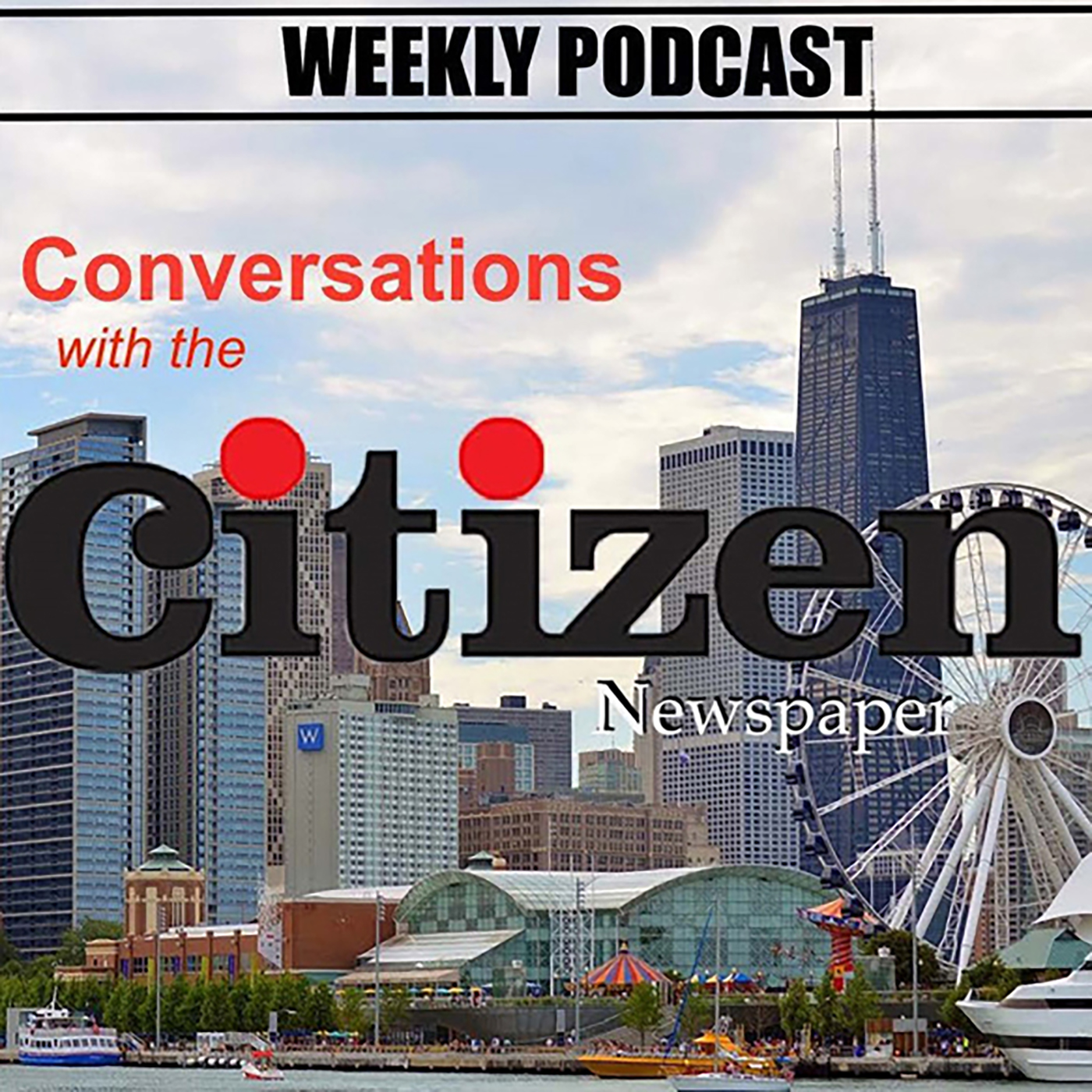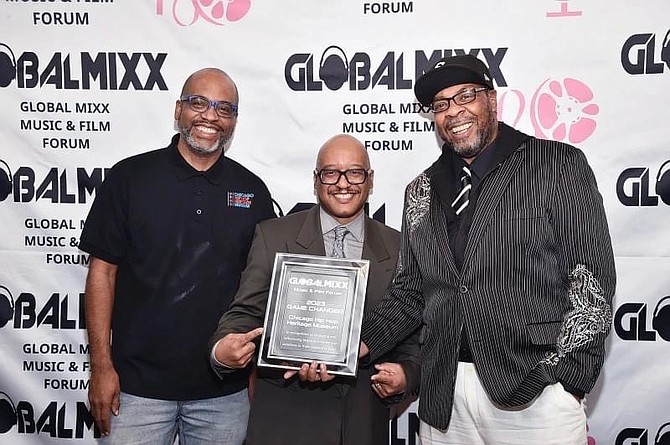Chicago Hip Hop Museum Cements Chicago’s Place In Hip Hop
Brian Gorman, Carrico Kingdom Sanders and Darrell Artistic Roberts created the
Chicago Hip Hop Museum to showcase the contributions Chicagoans made to Hip
Hop culture. PHOTO PROVIDED BY KINGDOM SANDERS.
In a Greystone in the Grand Boulevard neighborhood, there is a museum that celebrates Chicago’s contributions to Hip Hop. The Chicago Hip Hop Museum is a labor of love that was started by three friends who grew up in embedded in Chicago’s Hip Hop culture.
Brian Gorman, Carrico Kingdom Sanders and Darrell Artistic Roberts opened the Chicago Hip Hop Museum in 2021. It was supposed to be a monthlong exhibition for the Hip Hop Heritage Month in the space that Gorman uses as his office. Three years later, the Chicago Hip Hop Museum continues to educate and inform visitors about Chicago’s history in Hip Hop.
The first year, the goal of the museum was to recognize people who made contributions to Hip Hop in Chicago. The second year, it was about connecting to see how people in the pictures were connected to the Chicago Hip Hop culture. The third year, it was a celebration of the 50 Years of Hip Hop.
“In our whole mission of doing this, we realized that actually Hip Hop is older than 50 years and a lot of it was influenced here,” said Gorman.
Within the first rooms of the Chicago Hip Hop Museum, there is a timeline to show Chicago’s influence on Hip Hop and tie ins to how Hip Hop culture was birthed out of Chicago. Included in that is Pigmeat Markham, who did “Here Comes the Judge” and the Savoy Big Five, which became the Harlem Globetrotters.
From the 1950s and 1960s, into the next room, it goes to the 1970s and 1980s. Gorman gives the history of the musicians and dancers who influenced Hip Hop who were from Chicago. In the 1980s, Hip Hop grew, being included in television and movies. In one of the rooms there are images taken by photographer Raymond Boyd, which documented Hip Hop artists who come to Chicago to do shows.
“It’s really important for us to highlight our own and give credit to our own,” Gorman said.
Gorman talked about how transit influenced collaboration between young people across the city. On the wall is a directory of the artists, a Hip Hop database, from the meetings of the organizations. It shows an evolution and partnership of the young people who helped grow the Chicago Hip Hop culture. The next step was the business of Hip Hop, because studio time and promotion costs money. Out of that, there was Twista, The Legendary Traxster and Kanye.
On the second floor, there is a memorial wall for those who influenced and made contributions to Hip Hop in Chicago. There is a part of the Chicago Hip Hop Museum that features rappers who made appearances at Subterranean, Sub-T, which has the longest-running Hip Hop open mic. There is space on the second level that is used for podcasts and performances.
The Chicago Hip Hop Museum shows the dedication of Gorman, Sanders and Roberts to keep history alive and ensure people know about the influence Chicago and Chicagoans have on the Hip Hop culture.
Chicago Hip Hop Museum is located at 4505 S. Indiana and is open for tours on specific days and times.
For more information about the Chicago Hip Hop Museum, visit customresourceschicago.com/chicagohiphopheritagemuseum.
Latest Stories
- Grammy Award-Winning Artist and Philanthropist Lil Durk Celebrates Birthday with Chicago area Youth, National Prayer Day, and Nearly Sold-Out United Center Concert
- Gift of Hope Organ & Tissue Donor Network Jackie D. Lynch Building Celebrates with a Community Open House
- COOK COUNTY COMMISSIONERS TO RESPOND TO ALARMING SYPHILIS STATISTICS THROUGHOUT CHICAGO AND COOK COUNTY
- Nationwide Art Initiative Brings Together Communities Promoting Health Equity and Unity
- WELLNESS WEST FORUM TACKLES FOOD INSECURITY
Latest Podcast
Peggy Riggins

